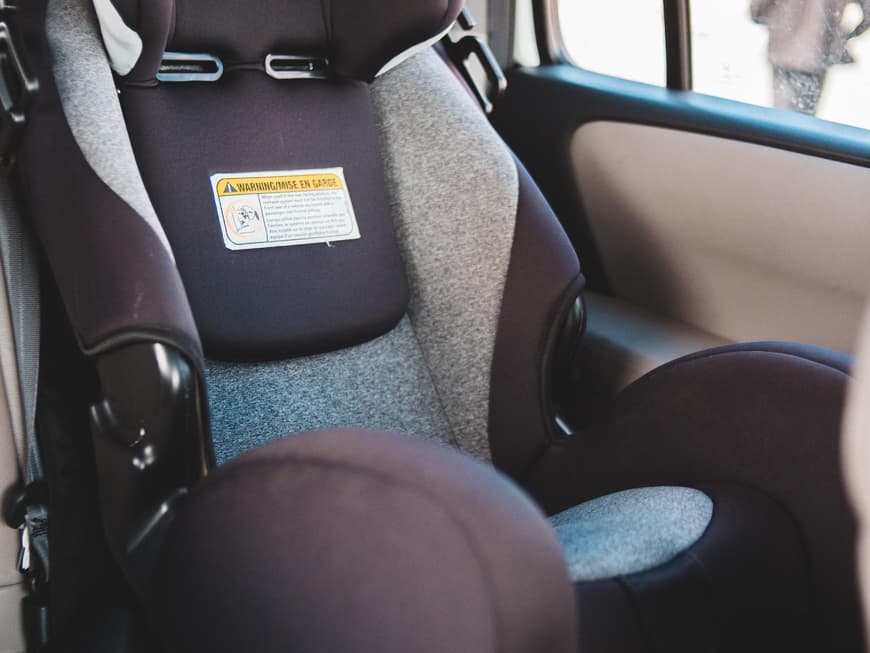
Against the direction of travel
In the first few months of life, the infant car seat is always transported in the car against the direction of travel. As babies are only able to hold their head independently after a few months, full braking with a forward-facing child seat would push the child's head out of the seat. However, if the rear-facing side of the infant car seat is facing the direction of travel, the child will only be pushed deeper into the seat during sudden braking and will not be injured.
Secure attachment in the car
Many children's car seats are secured in the car using an Isofix base station. The base station is mounted on the seat and the infant car seat or future child seat is clicked into it before the journey begins. When getting out of the car, the baby seat is removed from the anchorage and serves as a means of transport for the child. Swivel models ensure that the child seat can be turned in all directions in the anchorage.
What is ISOFIX?
This term refers to a fastening system for child seats. With the help of two brackets located between the backrest and the seat surface, base stations and child seats designed for this purpose can be attached. This prevents the child seat from tipping over. However, not every car has this convenience. For this reason, it is important to check whether all vehicles in which the baby will be traveling have this equipment before purchasing the child seat.
These child seat systems have a small disadvantage if the child is to be transported regularly in different vehicles. If the infant car seat or child seat is mounted on a base station, the child can only be taken along in this car unless it is to be constantly installed and removed. For a vacation in a hire car or a trip in the grandparents' car, a different child seat often has to be organized.
Car seat and baby carriage at the same time
Shopping, visits to the doctor, errands for pets - many trips are made by car to save time. A baby car seat with a chassis that can be converted into a baby carriage in a few simple steps is ideal for this. This saves space in the car, as the baby carriage stays at home.
Which child seat for which age?
Child seats are categorized according to the age, size and weight of the child. Large babies outgrow an infant car seat after just a few months, while premature babies need a baby seat reducer for the infant car seat. A general distinction is made between the following groups:
Group 0
Up to approx. 10 kilograms in weight and 75 centimeters in body length (from birth to 1 year)
Group 1
9 to 18 kilograms weight and 75 to 100 centimeters body length (1 to 4 years)
Group 2
15 to 25 kilograms in weight and up to 125 centimetres in length (3.5 to 7 years)
Group 3
25 to 36 kilograms in weight and 150 centimetres in length (7 to 12 years)
Tailored to your own child
With an infant car seat and a car seat for toddlers, you can get through the time when children need to be secured in a child seat in the car. So-called "growing" models should be avoided if possible, as they cannot take into account all the physiological changes of the early childhood development phase.

